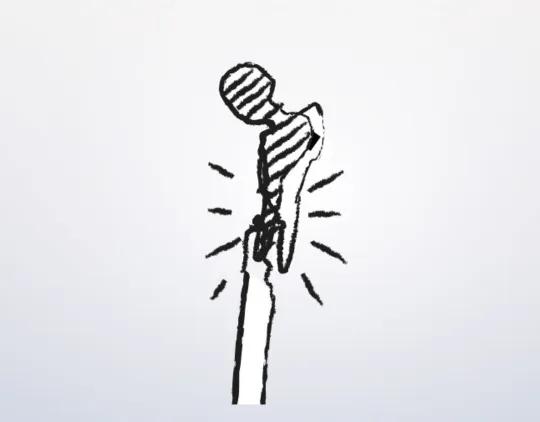Iliofemoral approach (Smith-Petersen)
1. Preliminary remarks
The anterior approach (Iliofemoral or Smith-Petersen) provides the most direct access to the anterior aspect of the hip.
Scar tissue due to previous exposure might obscure typical landmarks.
The anterior approach (Iliofemoral or Smith-Petersen) provides the most direct access to the anterior aspect of the hip. The anterior approach is not commonly used for periprosthetic fractures of the acetabulum.
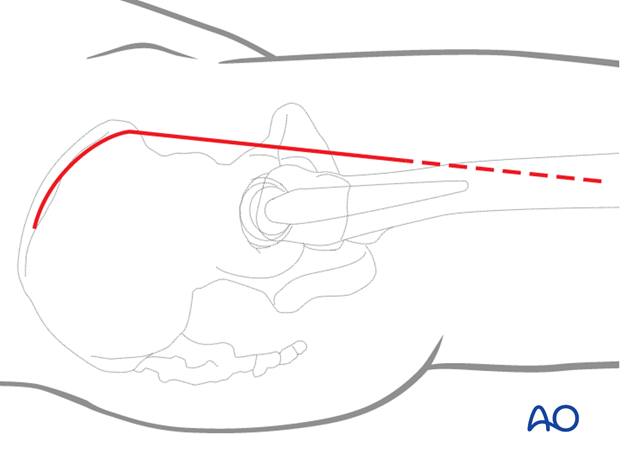
2. Skin incision
The skin incision begins over the lateral iliac crest and follows it to the anterior superior iliac spine. There it turns distally to follow the lateral side of the sartorius muscle.
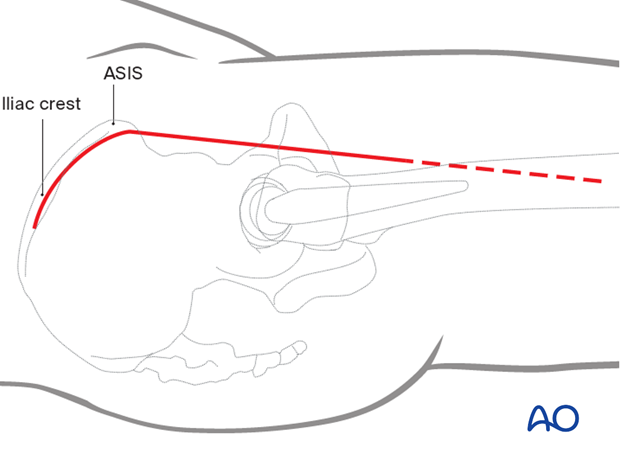
3. Develop interval between tensor fascia lata and sartorius
Release the abductor muscles from the lateral iliac crest and deepen the incision anteriorly, along the lateral border of sartorius.
Separate bluntly the tensor fasciae latae from the sartorius.
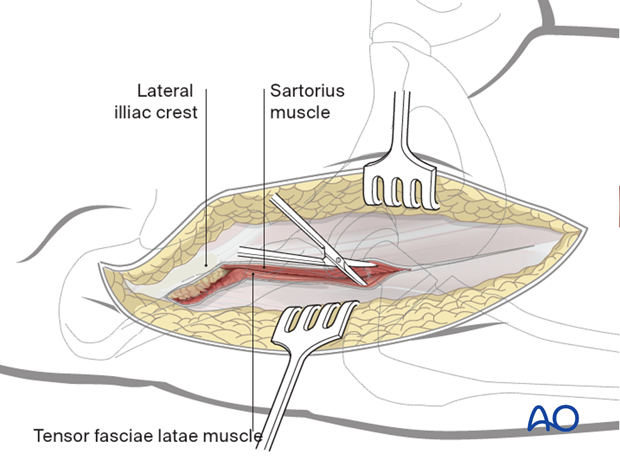
4. Deep surgical dissection
Identify, divide and ligate the lateral femoral circumflex vessels distally. Release the direct head of rectus femoris from the anterior inferior iliac spine, either through the tendon, or with an osteotomy.
Release the reflected head of this muscle from its more lateral attachment proximal to the hip capsule. This should be performed if more proximal exposure is needed.

If necessary, fully release the indirect and direct head of rectus femoris for improved exposure.
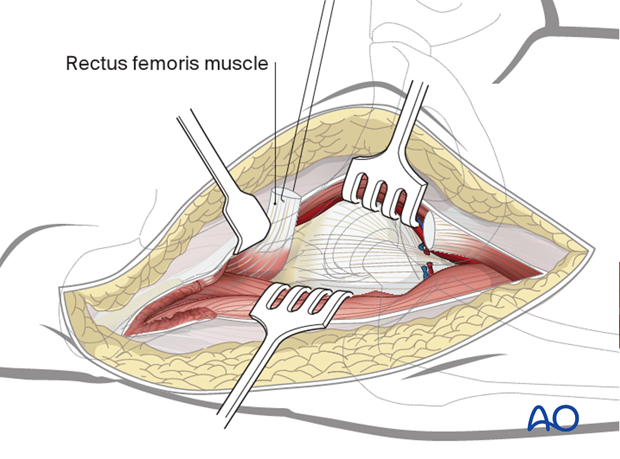
A T-shaped incision, with retention sutures medially and laterally, allows exposure of the proximal femur and prosthesis.
Lateral traction and repositioning (abduction and external rotation) the leg improves access to the bony pathology.
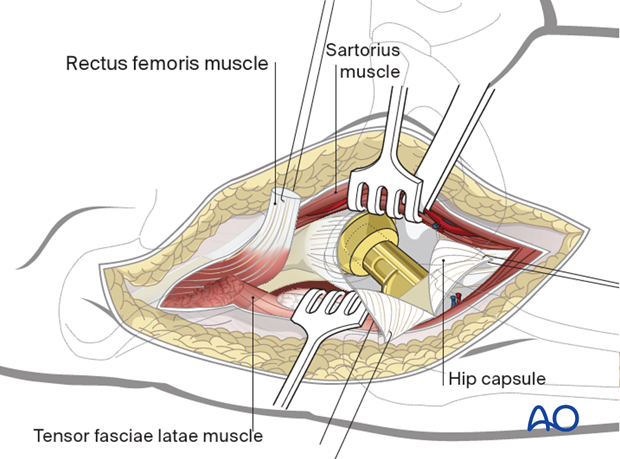
5. Closure
The closure includes:
- Capsular repair
- Rectus femoris reattachment if released
- Abductor origin repair
Considerations for periprosthetic fracture patients
A layered closure is preferred for periprosthetic fractures. A subfascial drain should be considered as blood loss can be significant and periprosthetic fracture patients are at high risk of requiring anticoagulation immediately postoperatively. A hematoma requiring evacuation must be avoided. The wound is closed in layered fashion according to the surgeon's preference.
Sterile dressing should be applied, and negative pressure incisional wound care can be considered.

